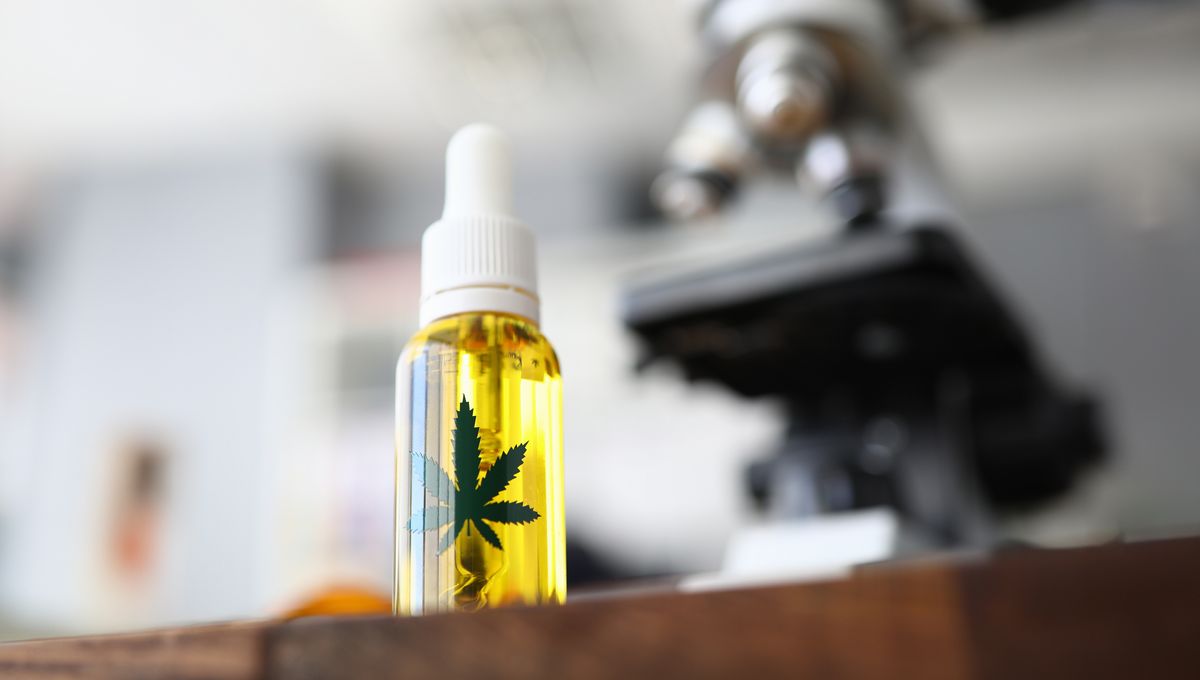
Scientists have determined that hexahydrocannabinol, a synthetic cannabinoid that is sometimes used in legal recreational drugs, can produce effects similar to those of the psychoactive chemicals in cannabis. The research also found that another form of the chemical has weaker psychoactive effects, suggesting that different types can produce different effects in people.
Hexahydrocannabinol, otherwise known as HHC, appeared on the market in recent years as a legal alternative to cannabis. It’s a popular recreational drug. In 2023, 54 percent of US vape shops sold HHC and it was available in 45 states. The aim of the drug is to produce a similar high to cannabis, especially in places where the latter is illegal. Although tetrahydrocannabinol (THC), the psychoactive compound in cannabis has been extensively researched, much less is known about HHC, especially its influence on the brain and its overall safety.
HHC exists as two main forms, known as epimers: 9(R)-HHC and 9(S)-HHC. These epimers contain the same atoms, but they’re arranged in ways that effectively mirror one another. Although this may seem irrelevant, this small difference can have significant implications for how the epimers interact with the body.
To investigate these differences, researchers from RTI International and the US Drug Enforcement Administration examined their effects on male mice. To do so, the team ran two sets of experiments. One set relied on what’s referred to as the cannabinoid tetrad test. This is a test used to evaluate whether a compound produces similar psychoactive effects to cannabinoids in rodents. It measures any reduced movement, decreased sensitivity to pain, lowered body temperature, and the presence of a trance-like state known as catalepsy.
The researchers found that the 9(R)-HHC produced strong and consistent effects in all four measures. Like THC, the epimer caused the mice to become less sensitive to pain, to move less, and to enter a more rigid state, all while their temperature dropped. This suggests the epimer interacts with the same receptors in the brain as THC.
In contrast, 9(S)-HHC only influenced two measurements – lower body temperature and increased immobility. At the same time, it required higher doses to produce these effects.
The other set of experiments, referred to as a “drug discrimination procedure”, focused on the mice’s ability to recognize the effects of the compound. Each mouse was placed in a specially designed chamber with two holes for them to poke their noses through (adorably referred to as “nose-poke apertures”). They were then trained to poke their noses through one of the holes depending on which drug they believed they had been injected with. Once the rodents had learnt to distinguish between being injected with THC and a neutral solution, they were injected with the HHC epimers to see if they would identify them as THC.
As with the previous test, the mice responded to 9(R)-HHC as if they had been injected with THC, but only at a moderate to high dose. Again, 9(S)-HHC was only able to pass as a substitute for THC at high doses, and even then, the mice only showed lower signs of toxicity and motivation.
The results indicate that 9(R)-HHC can mimic the psychoactive and behavioral effects of THC and so can potentially be abused in similar ways. This is not so much the case for 9(S)-HHC, unless it is taken in higher amounts. Importantly, some of the mice given the higher doses of 9(R)-HHC experienced tremors, seizures, and muscle tension and four of them died five to six days after exposure.
“It is unclear whether administration of 9(R)-HHC was a factor in their mortality as the cause of death for these mice is unknown,” the researchers explain in their paper. “It is very rare for mice exposed to cannabinoids to die several days later in our experience. There were no other deaths in mice used in the tetrad study.”
The results also demonstrate how chemicals that have the same atoms but different arrangements can produce powerfully different outcomes. This suggests that the epimers could produce varying effects based on the ratio of their administration. These chemicals are not well regulated, and so products that contain them often have varying ratios of either. This raises important implications for the drug’s use by humans, even if the study itself focused on mouse subjects.
The study is published in the Journal of Psychopharmacology.
Source Link: Common Cannabis Substitute May Be Far More Psychoactive Than Previously Thought